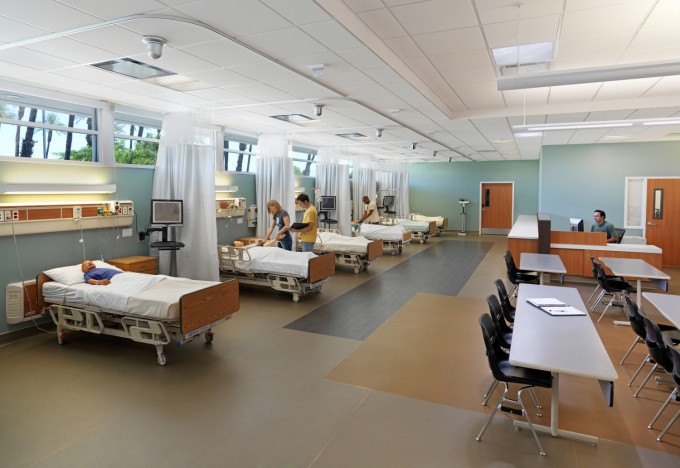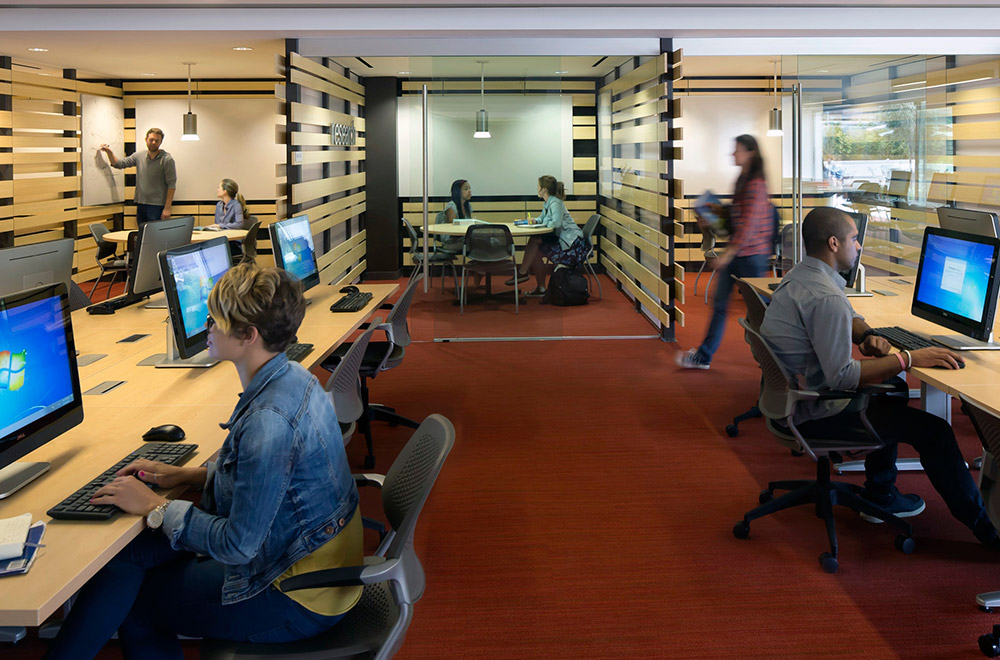By Ken Salyer, Managing Principal
“We’re trying to kill him,” whispers a nursing instructor at Mt. San Antonio College. She’s referring to “Paul,” the college’s new human patient simulation mannequin that is eerily realistic in its human qualities and ability to engage nursing students in hundreds of training scenarios. (And no, the instructor didn’t actually harm Paul, but she did test his limits.)
Human patient simulator mannequins are gaining popularity and credibility on college and university campuses, and some are used for national certification examinations.* Although medical and nursing students still need hands-on experience in a hospital environment, the simulation mannequins provide valuable learning opportunities and at some institutions count for up to 25 percent of a student’s clinical training hours.*

Simulation Lab at College of the Desert
With our experience in higher ed and healthcare design, designing simulation labs and health clinics on college and university campuses is a natural fit—it’s one of those rare, exciting opportunities when our healthcare experts team up to work with our higher ed team. Our medical planners bring their expertise in regulations (patient privacy, HIPPA) and apply them to college and university health clinics and labs, collaborating with our higher ed team to design learning spaces for the next generation of healthcare professionals.
We’ve designed several simulation labs with the use of human patient simulator mannequins in mind, and understand the way students learn and interact with them. The mannequins are connected to a computer that is controlled by a technician in an adjacent room. From there, the technician controls the actions of the mannequin, monitors pain sensors, and even speaks for the mannequin. The technician’s room typically has a one-way mirror for observing students’ responses to the mannequin.

Video cameras enable instructors to monitor simulations in real-time.
We decided to rethink the one-way mirror after learning how the students respond to the mirror during an actual simulation. During a simulation, some students panic when they are unsure of what to do for their patient mannequin. Their reaction was to look up at the one-way mirror, as if they were asking the technician for help. At College of the Desert’s Barker Nursing Complex, we included video cameras and microphones to allow real-time monitoring and give instructors the option to eliminate the visual tether of the mirror.
For more information about HMC’s healthcare designs on college and university campuses, contact us.
For research about the effectiveness of human patient simulator mannequins, visit simulationinhealthcare.com
 Ken Salyer is a principal for HMC’s higher education studio in Ontario, Calif. He believes that the essence of architecture for education is people—those who work, teach, and learn within the buildings we design. Learn more about Ken >>
Ken Salyer is a principal for HMC’s higher education studio in Ontario, Calif. He believes that the essence of architecture for education is people—those who work, teach, and learn within the buildings we design. Learn more about Ken >>
Sources:
1. Simulation in Healthcare, Journal of the Society for Simulation in Healthcare, Vol. 7, No. 3, June 2012.
2. California Board of Registered Nursing, http://www.rn.ca.gov
